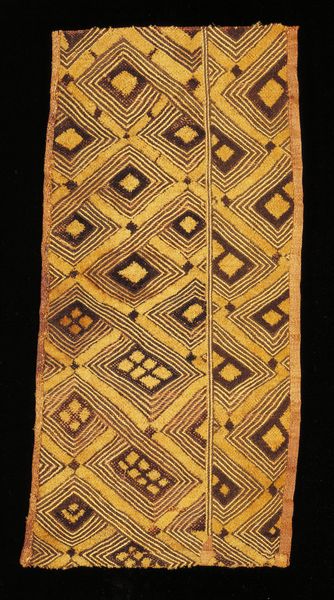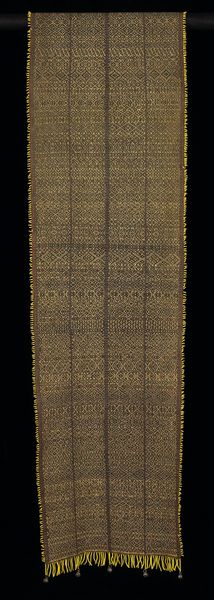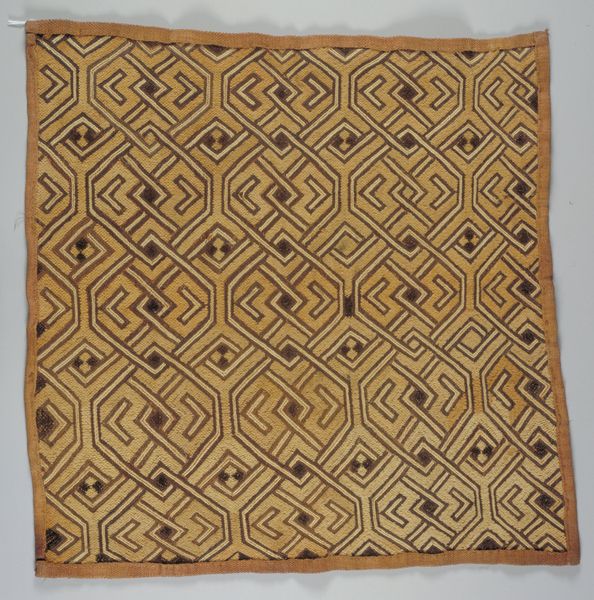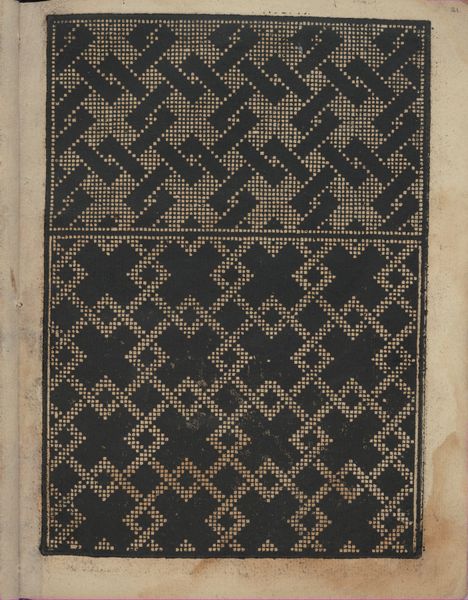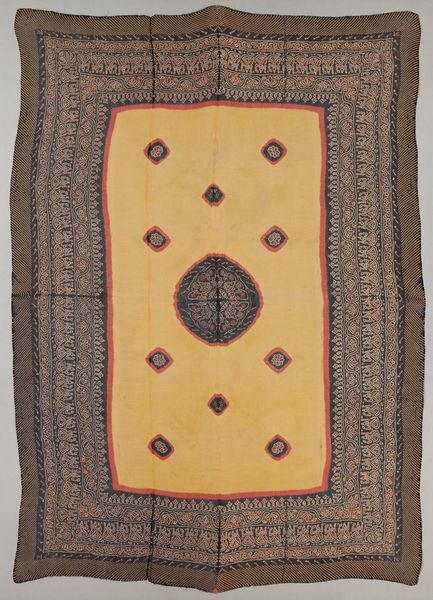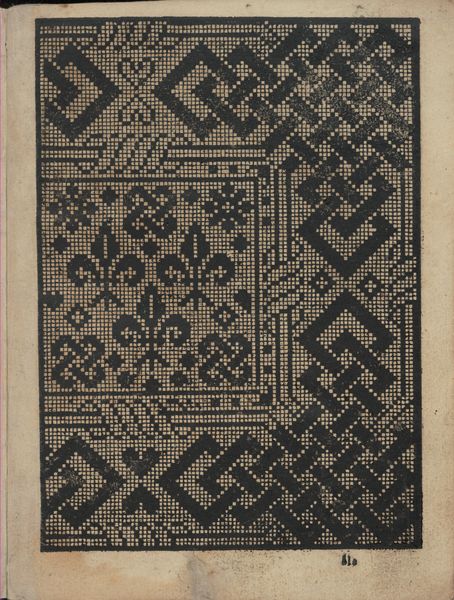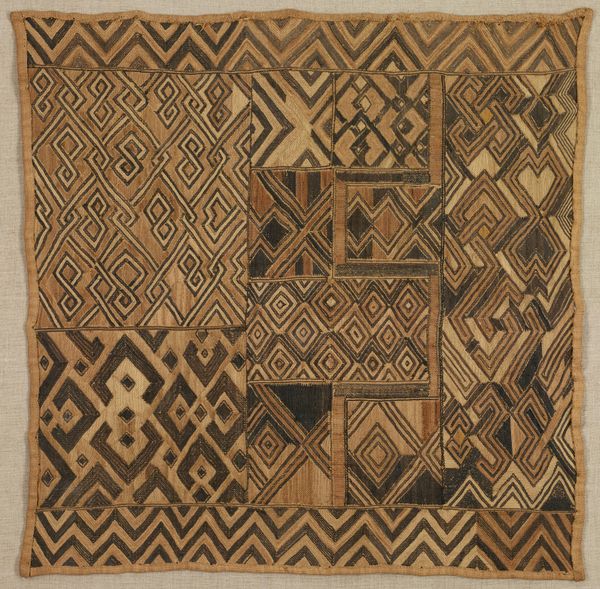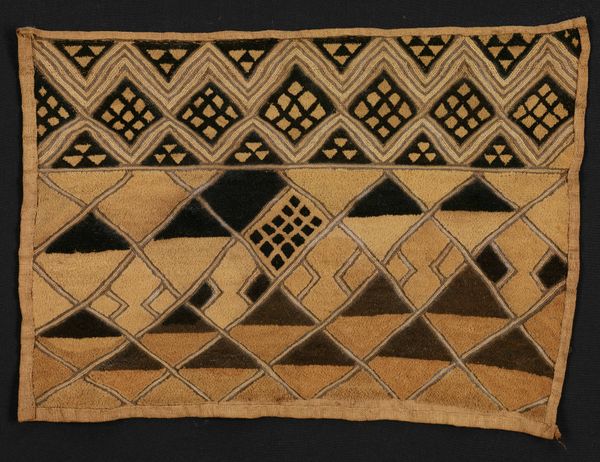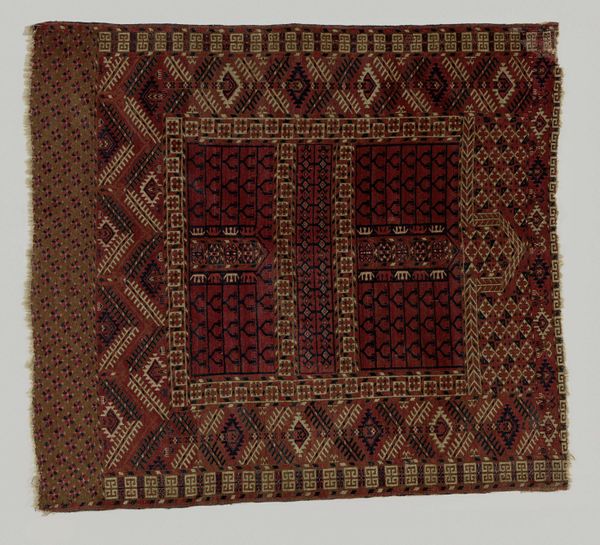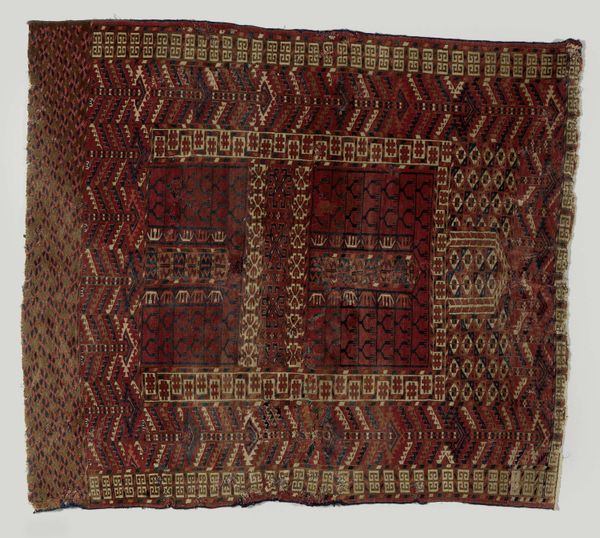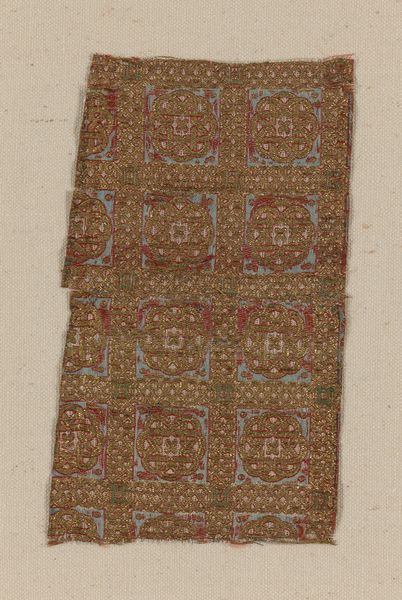
panel, textile
#
african-art
#
panel
#
pattern
#
textile
#
geometric pattern
#
geometric
#
abstraction
Dimensions: 26 5/8 x 20 3/4 in. (67.63 x 52.71 cm)36 x 28 1/2 in. (91.44 x 72.39 cm) (outer frame)
Copyright: Public Domain
Curator: This textile panel, likely created in the mid-20th century by an artist of the Kuba people, presents such intriguing geometries. Editor: My first thought is warmth, a very grounded, earthy feel. It breathes a sort of ancient serenity, doesn't it? Curator: It certainly does. And beyond the aesthetics, think about the labor involved. Kuba textiles like this were traditionally made by men, weaving raffia palm fibers—a demanding and time-consuming process. Editor: Raffia. That accounts for that slightly irregular texture, a beautiful contrast to the rigid geometry. What strikes me most is how each diamond holds a different pattern—variations on a theme, each so subtly distinct. It reminds me of little personalities contained within similar frameworks. Curator: It's an excellent point, underscoring the inherent dynamism within seemingly ordered structures. Consider, too, the use of dyes, likely natural vegetable dyes sourced locally. This isn’t just about abstract form; it’s about using what the land provides. Editor: I love that thought! It makes it so intrinsically tied to its place of origin. So much contemporary art feels disconnected from anything tangible, doesn't it? This panel whispers of ancestral knowledge, passed down through hands and materials. The panel appears well worn—perhaps part of an age-old initiation garment or some other special ceremonial display. Curator: It could have served multiple purposes: clothing, adornment, even currency in some instances. The meticulous construction reflects the value placed on both the object itself and the act of creation. These weren't just decorations; they were integral to Kuba social and economic life. Editor: Looking closely, I also wonder at the choice of colors, these rich blacks and earthen browns set on the pale tan weave; to what extent where the colors locally or religiously important? Curator: Good question—further research is probably warranted. But considering the materials and processes—the hands that wove the raffia, the dye harvested from plants—grounds this piece so powerfully. Editor: Yes, absolutely. Looking at this panel I now find it almost throbbing with an innate quality from some distant relative from our shared hominid past.
Comments
No comments
Be the first to comment and join the conversation on the ultimate creative platform.
